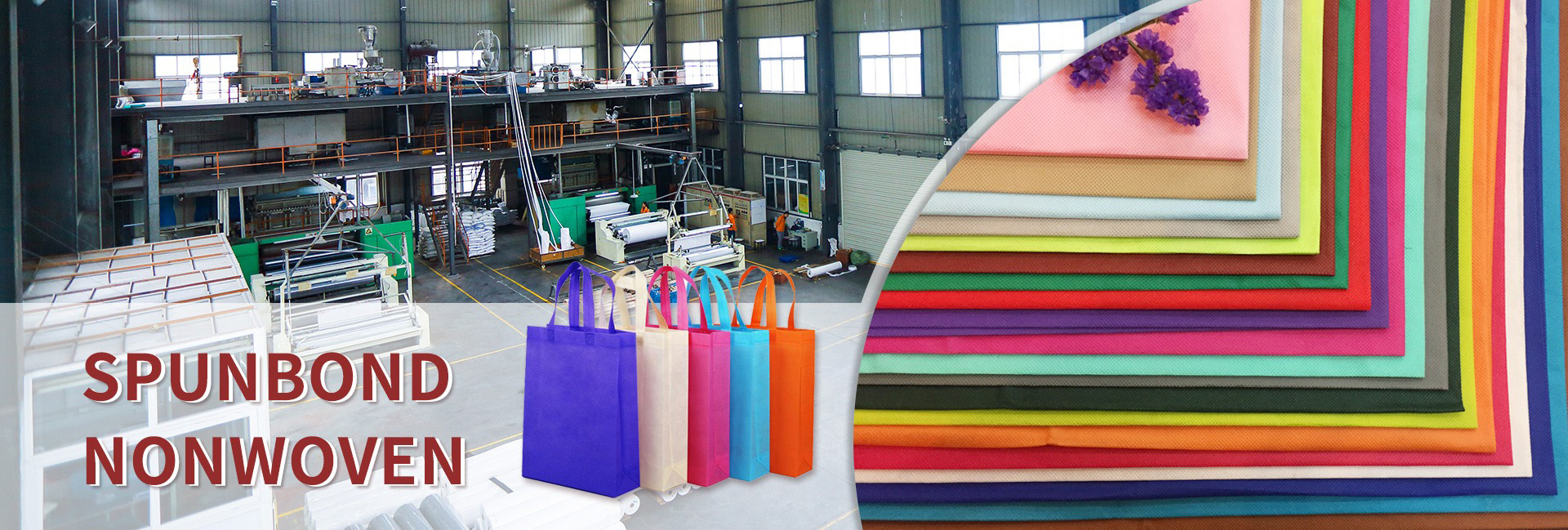Okay, let’s explain in detail the principle of elastomer modification to improve the toughness of spunbond nonwoven fabrics. This is a typical example of achieving high performance by “maximizing strengths and minimizing weaknesses” through material composites.
Core Concepts: Toughness vs. Brittleness
First, let’s understand “toughness.” Toughness is a material’s ability to absorb energy and undergo plastic deformation until it fractures under stress. A material with good toughness is both strong and resilient, requiring a significant amount of work to fracture.
Brittle materials (such as unmodified polypropylene): Under external force, the molecular chains do not have time to rearrange, stress concentrates at defects, directly leading to rapid fracture and low elongation at break.
Tough materials: Under external force, they can yield and undergo plastic deformation, consuming a large amount of energy in the process, thus resisting fracture.
The core purpose of elastomer modification is to transform semi-crystalline polymers like polypropylene from brittle fracture behavior to ductile fracture behavior.
Detailed Principles of Elastomer Modification
The principle can be understood from both microscopic and macroscopic levels. The core lies in the elastomer particles acting as stress concentration points and energy absorbers.
1. Microscopic Mechanical Mechanism: Induction and Termination of Crazing, Promotion of Shear Yield
This is the most crucial principle. When spunbond fabric is subjected to external forces (such as tearing or impact), the following processes occur internally:
a) Stress Concentration and Crazing Initiation
Elastomers (such as EPDM, POE) are typically incompatible or partially compatible with the polypropylene matrix. Therefore, after blending, they are distributed as tiny, dispersed “island” structures within a continuous polypropylene “sea” phase.
Since the modulus of the elastomer is much lower than that of polypropylene, a large stress concentration occurs at the interface between the two phases when subjected to external forces.
These stress concentration points become the initiation points for crazing. Crazing is not a crack, but rather a microporous fiber bundle structure perpendicular to the stress direction, still connected internally by polymer fibers. The formation of crazing absorbs a large amount of energy.
b) Crazing Termination and Shear Band Formation
The second key role of elastomer particles is to terminate crazing. When crazing encounters flexible elastomer particles during its propagation, the high stress field at its tip is blunted, preventing the crazing from developing into fatal macroscopic cracks.
Simultaneously, stress concentration also induces shear yielding in the polypropylene matrix. This refers to the relative slippage and reorientation of polypropylene molecular chains under shear stress, forming shear bands; this process also requires a significant amount of energy.
c) Synergistic Energy Dissipation Mechanism
Ultimately, the externally applied energy is dissipated primarily through the following pathways:
Forming numerous crazing: energy consumption.
Deformation and fracture of the elastomer particles themselves: energy consumption.
Shear yielding of the matrix: energy consumption.
Interfacial debonding: the elastomer particles peeling from the matrix, energy consumption.
This process significantly increases the work required for material fracture, macroscopically manifested as a significant improvement in impact strength and tear resistance, while also substantially increasing elongation at break.
2. Phase Structure Changes: Affecting Crystallization Behavior
The addition of elastomers not only acts as a physical “additive” but also affects the microstructure of polypropylene.
Refining Spherulites: Elastomer particles can act as heterogeneous nucleation sites, disrupting the regular arrangement of polypropylene molecular chains and causing them to crystallize into finer, denser spherulite structures.
Improving the Interface: By using compatibilizers, the interfacial adhesion between the elastomer and the polypropylene matrix can be improved, ensuring that stress can be effectively transferred from the matrix to the elastomer particles, thereby more effectively inducing crazes and shear banding.
Specific Applications in Spunbond Nonwoven Fabric Production
Applying the above principles to the production of spunbond nonwoven fabrics has the following effects:
Enhanced Toughness of Individual Fibers:
During the spinning process, the polypropylene melt containing elastomers is stretched into fibers. The modified fibers themselves become tougher. Under external force, the fibers are less prone to brittle fracture and can undergo greater plastic deformation, absorbing more energy.
Strengthening and Toughening of the Fiber Network Structure:
During hot rolling reinforcement, the fibers fuse at the rolling point. Fibers with better toughness are less likely to break instantly at the rolling point when subjected to tearing forces.
External forces can be redistributed more effectively throughout the fiber network. When a fiber is subjected to significant stress, it can transfer the stress to surrounding fibers through deformation, preventing rapid failure caused by stress concentration.
A leap forward in tear and puncture resistance:
Tear resistance: Tearing is the process of crack propagation. Elastomer particles effectively initiate and terminate numerous microcracks, preventing them from coalescing into macroscopic cracks, greatly slowing down the tearing process.
Puncture resistance: Puncture is a complex combination of impact and tearing. High-toughness materials can undergo extensive yielding and deformation when a foreign object pierces, encapsulating the piercing object instead of being directly punctured.
Conclusion
Summary: The principle of elastomer modification to improve the toughness of spunbond nonwovens is essentially to combine a rigid but brittle polypropylene matrix with a soft, highly elastic rubber, constructing an efficient energy dissipation system within the material.
By inducing crazing, terminating cracks, and promoting shear yielding through microscopic mechanical mechanisms, the destructive energy (impact, tearing) applied externally is converted into a large amount of tiny, non-destructive deformation work. This macroscopically improves the material’s impact resistance, tear resistance, and elongation at break, transforming spunbond nonwoven fabric from “fragile” to “tough.” This is similar to adding steel bars to cement, which not only increases strength but, more importantly, provides crucial toughness.
Dongguan Liansheng Non woven Technology Co., Ltd. was established in May 2020. It is a large-scale non-woven fabric production enterprise integrating research and development, production, and sales. It can produce various colors of PP spunbond non-woven fabrics with a width of less than 3.2 meters from 9 grams to 300 grams.
Post time: Nov-16-2025

